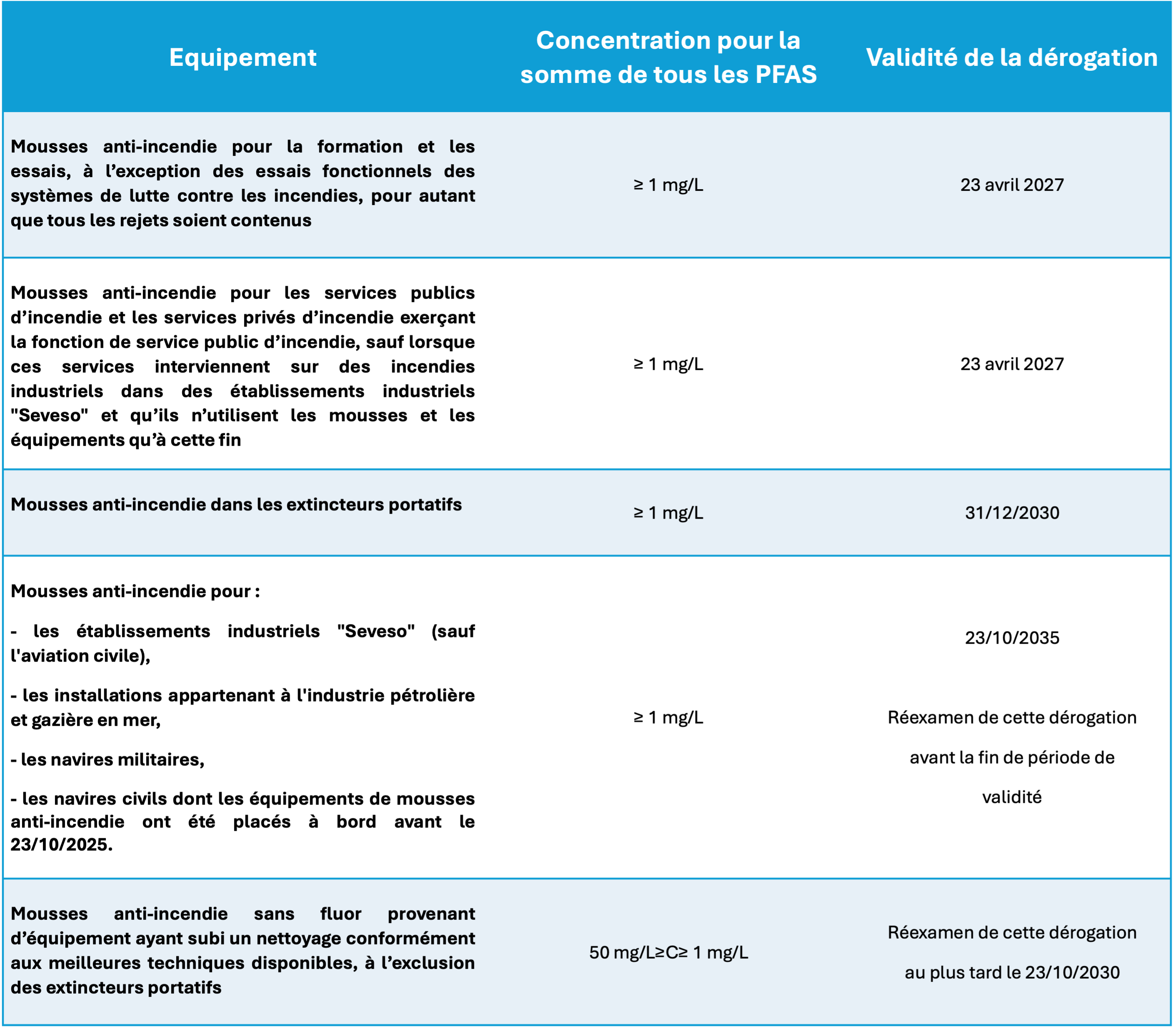With the aim of eliminating all non-essential uses of PFAS, Regulation (EU) 2025/1988 of October 2, 2025 amends Annex XVII of the REACH Regulation on restrictions on the manufacture, placing on the market and use of certain dangerous substances, mixtures and articles to include PFAS substances in its entirety.
In this context, these substances may not be marketed or used from October 23, 2030 in fire-fighting foams at a concentration equal to or greater than 1 mg/L for the sum of all PFAS. However, this date must be viewed in the light of the derogations introduced, whose associated prohibition or marketing dates may be more restrictive or more flexible, depending on the equipment concerned or the context of its use.
What are we talking about?
Fire-fighting foam is any mixture intended for fire-fighting purposes, including, but not limited to, fire-fighting foam concentrates and foam-producing fire-fighting foam solutions.
Which substances are concerned?
Any substance containing at least one fully fluorinated methyl (CF3) or methylene (CF2) carbon atom (with no H/Cl/Br/I carbon atoms bonded to it).
However, the October 23, 2030 ban does not apply:
- perfluorooctane sulfonic acid (PFOS), its salts and PFOS-related C8F17SO3X compounds;
- perfluorooctanoic acid (PFOA), its salts and PFOA-related compounds;
- perfluorohexane sulfonic acid (PFHxS), its salts and PFHxS-related compounds;
- linear and branched perfluorocarboxylic acids of the formula CnF2n +1-C(= O)OH where n = 8, 9, 10, 11, 12 or 13 (C9-C14 PFCAs), including their salts and combinations thereof;
- undecafluorohexanoic acid (PFHxA), its salts and PFHxA-related substances.
These substances are already subject to restrictions in Annex I of Regulation 2019/1021 (for PFOS, PFHxS and PFOA) or Annex XVII of REACH (for PFCA and PFHxA).
Nevertheless, when determining the concentration of the sum of all PFAS, these substances are included in the determination.
Are there any exemptions to the ban on use?
PFAS can be used in fire-fighting foams at a concentration equal to or greater than 1 mg/L for the sum of all PFAS :

Additional measures to be implemented
As of October 23, 2026, for the October 23, 2025 and October 23, 2035 PFAS use bans, the use of fire-fighting foams containing PFAS (with the exception of those contained in portable extinguishers) at a concentration equal to or greater than 1 mg/L for the sum of all PFAS must comply with the following conditions:
- The user must ensure that fire-fighting foams are only used for fires involving flammable liquids (Class B fires);
- the user must reduce emissions into the environment and direct and indirect human exposure to fire-fighting foams to as low a level as is technically and practically feasible;
- the user must ensure the separate collection of stocks of unused fire-fighting foam and of PFAS-containing waste, including wastewater, from the use of fire-fighting foam, where technically and practically feasible, and ensure that it undergoes appropriate treatment so that the PFAS content is irreversibly destroyed or transformed;
- the user must draw up a "PFAS fire-fighting foam management plan" specific to the location where PFAS fire-fighting foams are to be used. This management plan must be reviewed annually and retained for at least 15 years for inspection, on request, by the competent authorities.
In addition, from the same date, all users of fire-fighting foam (including portable extinguishers) containing PFAS must ensure that stocks of unused fire-fighting foam and waste containing PFAS, including wastewater, from the use of fire-fighting foam, are labelled when the concentration of the sum of all PFAS is equal to or greater than 1 mg/L (in the official language(s) of the Member State(s) where the stocks of unused fire-fighting foam and waste containing PFAS are generated and will be treated).
This labelling includes the following statement:
"WARNING: Contains per- and polyfluoroalkylated substances (PFAS) at a concentration equal to or greater than 1 mg/L for the sum of all PFAS".
This information is displayed visibly, legibly and indelibly.


.svg)



